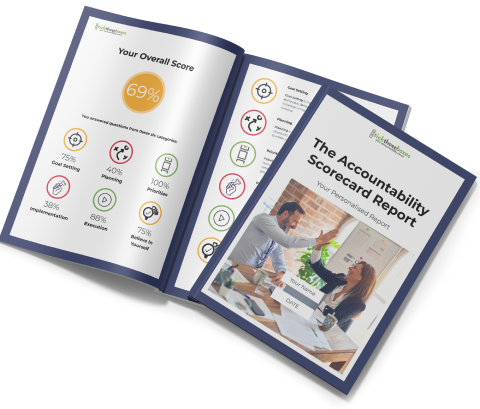
Posted on: 13/04/2023

Accountability in office represents that employees are held responsible for their actions and performances. But does the word accountability make your employees wince at the thought? This is probably because the superiors are trying to mandate accountability from the top down.
Accountability does not have to sound that dreadful to organizations. Giving constructive feedback to employees help in their career building. It leads to commitment towards work and a morale boost among employees. As a superior, you must discuss their performances and form a path leading to their success.
According to data, 91% of employees believe that “effectively holding others accountable” is one of their company’s top leadership-development needs, and 82% of managers agree that they have “limited to no” ability to do so.
Based on Darren Finkelstein’s experience as an accountability coach, let Tick Those Boxes tell you about the approaches firms need to take to increase accountability.

Discover your Accountability Score and increase the probability of smashing your GOALS and Getting Sh!t Done!
Keep-ins are essential for maintaining team members’ accountability. Team members are given a chance to live up to expectations by receiving ongoing feedback, which aids in their understanding of those expectations.
Giving “descriptive feedback,” which describes behaviours without putting any judgments or reasons on them, can also make feedback more effective.
Because of the tension, managers avoid having accountability discussions; they may have allowed the tension to fester over time. Continuous forms of feedback reduce the intensity to manageable portions and foster ongoing conversations to improve performance.
You might have been setting the same goals over and over again but not be able to achieve results. It might be because you are not holding yourself accountable for your actions. Accountability is what makes your dreams change into goals and develop strategies to achieve them. Some of these benefits include:
When you deliver feedback, it can be through levels of support that will provide positive results. The challenges will act as the goals that the employee will strive to achieve.
Here we have shared the steps that business owners take to increase accountability and bring a balance to the work culture.
Thinking frequent feedbacks are a hassle, many big corporations have resorted to delayed and half-hearted feedback sessions. In many firms, they do not exist. This is not an option.
Frequent feedback will make the employees think that their work is making a mark and has some impact. Their performance will turn for the better if they feel they are receiving attention.
Once the dialogue is ended, constructive criticism continues. Instead, it involves regularly checking in to see how the employee is taking to the conversation over time. Write down three to five various methods to explain the issue in one criticism. Then decide on a more corrective strategy.
Recognizing the employee for putting better behaviour into practice and having additional conversations if their behaviours don’t improve are also included in this.
When you are giving constructive criticism to employees, it is important to create a pathway for their improvement. If an employee sees you have kept tabs on his improvements and celebrate them, it will motivate him to do better. It is better to match struggling employees with mentors who will review their work at each step and increase their confidence.
If your feedback seems to be fair and not partial towards any employee, people are more likely, to be honest about mistakes.
Fairness being put first in our accountability procedures paves the way for two significant changes. It first builds the link between donation and contributor once again. By concentrating on fairness, accountability systems’ biases are revealed. Numerous studies demonstrate how organizations’ accountability systems contain unconscious biases that give certain groups preferential treatment.
Managers may feel like they are being fair, but the employees might be on a different page. For this, they can take an anonymous survey and play the field to know the opinions of the employees.
Accountability in many corporations is looked at with apprehension as employees think it brings a wave of harsh blaming. The next best option is to hide mistakes and blame someone else.
It could drastically change how people view their own mistakes if leaders thought that falling short of a goal still had value.
Leaders need to be humble, gracious, and patient to handle mistakes in a restorative manner. The trajectory of a person’s career must be seen by them as more than the sum of any one assignment. The humility to admit their part in others’ failures is a quality that leaders require.
We still have a long way to go before accountability becomes a part of every organization. But, to make this process a little faster, take help from Darren Finkelstein, an accountability coach. You can book your complimentary accountability assessment by visiting his website.
I was excited to join Tia Harmer on The Work in Progress: The Personal Productivity Science Insights Podcast! We dive deep into the science of goal setting and the power of accountability—two cornerstones of business and personal success.